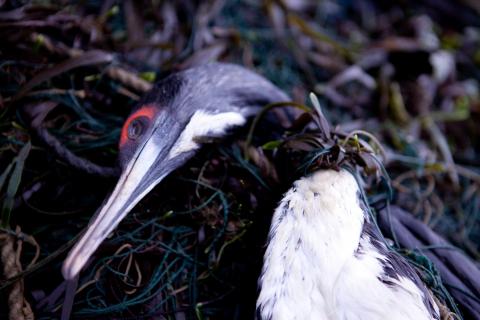A new experiment in Peru showed promising results, resulting in 85 percent fewer guanay cormorants - a native diving bird that commonly becomes entangled in nets - being caught. in Sechura Bay in northern Peru, LED lights attached at regular intervals to commercial fishing gillnets, which are anchored to the bottom of the water and left in situ from late afternoon until sunlight, when the fishermen collect their haul. showed drastic reductions in bycatch.
The researchers used 114 pairs of nets, each typically around 500-metres in length. In each pair, one was illuminated with light-emitting diodes (LEDs) placed every ten metres along the gillnet floatline. The other net in the pair was the control and not illuminated. The control nets caught 39 cormorants, while the illuminated nets caught just six. Previous research showed LED lighting also reduced the number of sea turtles caught in fishing nets by 64 percent, without reducing the intended catch of fish.

Guanay cormorant stuck in a net. Credit: Andrew F Johnson
"We are very encouraged by the results from this study." said lead author Dr. jeffrey Mangel, from the University of Exeter. "It shows us that we may be able to find cost-effective ways to reduce bycatch of multiple taxa of protected species, and do so while still making it possible for fishers to earn a livelihood."






Comments